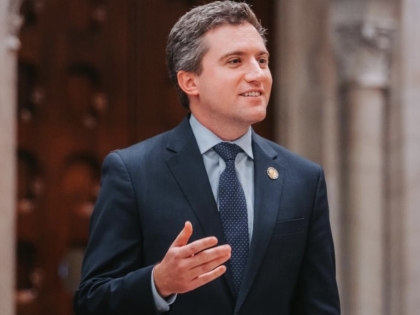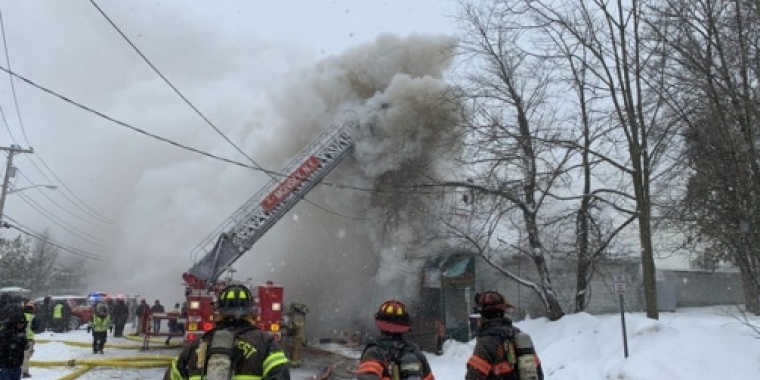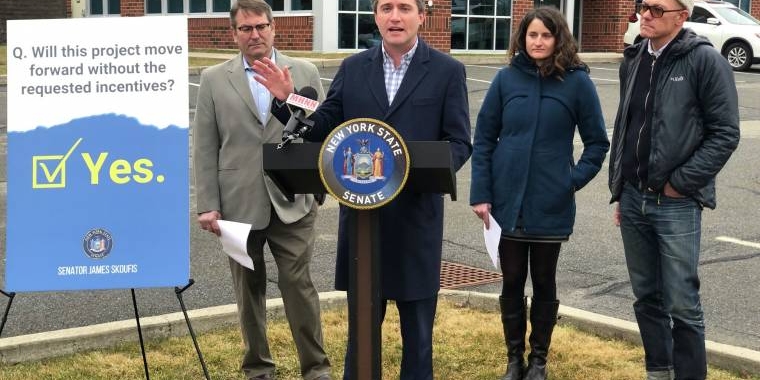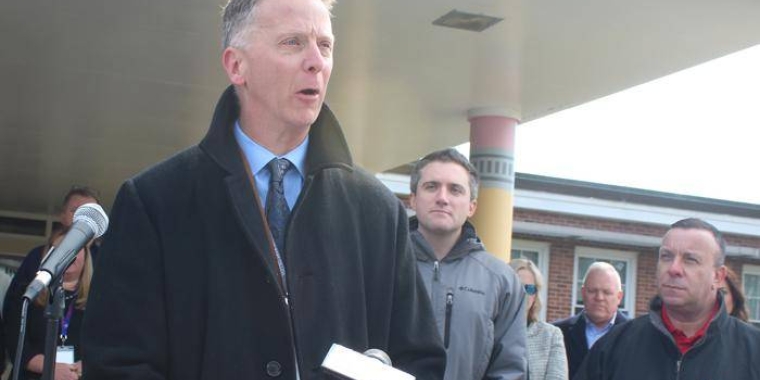
Opinion: Building Code Enforcement is the Difference Between Life and Death
Senator James Skoufis & Assemblyman Ken Zebrowski
April 30, 2021

During every fire emergency across New York State, the difference between life and death for a resident or first responder is directly related to building code inspections and enforcement. These inspections — that may otherwise seem mundane or perfunctory — are a cloak of safety to firefighters during a chaotic and smoke-filled emergency. Volunteer and paid firefighters are trained to tackle the unpredictability of flames but, when they recently responded to a major fire that broke out at Motty’s Supermarket in Monsey, the unpredictability of the building itself became the biggest challenge. Firefighters were faced with a building that had been illegally altered causing confusion and exacerbating an already dangerous situation. Fortunately, firefighters made quick and tactful decisions and were able to evacuate everyone before the entire building collapsed.
Fires and emergency situations already carry great risks; code evasion by a building owner and lax enforcement by a local government should not add fuel to that fire. Our first responders shouldn’t have to wonder if the property owner has put a shipping container addition onto a building or that a building that should have a sprinkler system doesn’t. In the case of Motty's Supermarket, the fact that this property owner erected illegal structures, built outside of their property lines, and consistently flouted the building code is egregious — eclipsed only by the reality that it operated for so many years without corrective action. There ought to be no leeway in the solemn responsibility of code enforcement, and were it not for the foresight of our fire officials that day, we may have been memorializing another fallen firefighter.
We have been working in the in the Assembly and Senate to bring statewide solutions to these local problems. In just the past few years, we’ve authored and supported new laws that required LLC disclosure of property owners, reformed the school fire safety report process, created a disciplinary process for unscrupulous code enforcement officers, and increased penalties for altered buildings. Although we have made progress, our work is not done. In 2019, Senator Skoufis’ committee conducted an investigation and held hearings into the code enforcement administration practices of several New York municipalities, including the Town of Ramapo. The investigation looked at failures at the local level, shortcomings in state government, and identified ways to improve code enforcement. From that investigation, several pieces of legislation were developed; many of them carried by both of us.
The failure to properly enforce the uniform code is a serious problem with potentially fatal consequences. While state legislation can assist, there is no substitute for the prioritization of code enforcement by our local governments. There needs to be a culture of compliance, not a "build first — ask for forgiveness later" mentality. Local governments should use all tools at their disposal for a property owner that persistently violates the building code and puts the public at risk.
The question is: where do we go from here? We will continue to improve our state laws to ensure that unscrupulous property owners are held accountable. We will continue to push for oversight of our local governments and work to shift the paradigm in these municipalities. We have a package of legislation that ranges from increasing penalties on building code violators, expanding the oversight of local building departments, streamlining building code official training, and empowering local governments to crack down on violators. However, we need partners to be truly successful.
Code enforcement extends beyond the state or local laws or the issuance of violations. To get real results, the process must be holistic and seamless. After a violation is issued, the burden shifts to local prosecution efforts to ensure they are building a strong case as well as pushing for timely compliance and commensurate penalties. It is the up to our local judges to uphold the rule of law and adjudicate these cases in a fair and equitable manner that spurs the curing of the violation in an expeditious manner. At the end of the day, code enforcement, like a chain, is only as strong as its weakest link. Every municipality and every person in authority must put politics aside, stop going along to get along, and treat this issue like the emergency it becomes when that fire alarm goes off.
The legislation passed by the Senate Majority includes:
- Prohibiting the Use of Plywood: This bill, S.1726A, sponsored by Senator James Skoufis, will prohibit the use of plywood, wood composite, wood veneer, or similar wood-based products to board up vacant abandoned properties.
- State and County Investigations: This bill, S.7300, sponsored by Senator James Skoufis, will allow for county intervention on unenforced code violations and allow the county to trigger a state investigation in order to trigger jurisdictional transfer from a municipality to a county in certain circumstances.
- Municipal Authority: This bill, S.7301, sponsored by Senator James Skoufis, will provide additional lower court judicial authority to make it easier for municipalities to address violations of the building and fire prevention code.
- Creation of Residential Rental Registry: This bill, S.7288A, sponsored by Senator Brian Kavanagh, will create a statewide residential rental registry to provide information relating to rental units including code violations.
- Increases State Code Enforcement: This bill, S.7287, sponsored by Senator Jamaal Bailey, will increase the state code enforcement powers of the secretary of state by establishing a separate state code enforcement office headed by an ombudsperson.
- Penalties for Dangerous Apartment Alterations: This bill, S.1714, sponsored by Senator John E. Brooks, creates penalties on building owners of up to $7,500 for violations of the uniform fire prevention and building code that impedes egress during a fire or other emergency evacuation.
- Building Code Penalties: This bill, S.4938, sponsored by Senator David Carlucci, will enhance pre-existing building code penalties for repeat offenders of State uniform fire prevention and building code.
- Fire Extinguisher Requirements: This bill, S.2813A, sponsored by Senator Leroy Comrie, will require fire extinguishers to be placed on each floor of all rental apartment buildings.
- Time Restrictions for Court Issued Consent Orders: This bill, S.3320, sponsored by Senator Robert Jackson, will establish time restrictions for court issued consent orders for work performance to remove or remedy dangerous conditions or building code violations.
- Fines for Code Violations: This bill, S.7292A, sponsored by Senator Rachel May, imposes escalating fines for code violations and illegal conversions.
- Code Enforcement Training and Certification: This bill, S.7291, sponsored by Senator Roxanne Persaud, will increase the minimum standards for training and certification for code enforcement personnel.



